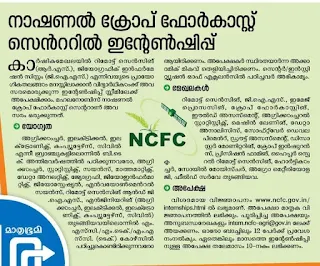#Internship @ National crop forecast Centre.
Vineesh V
AISHE and UGC Nodal Officer
Assistant Professor of Geography,
Government College Chittur, Palakkad
https://vineesh-geography.business.site
#GIS
Remote Sensing
#Geography.
The internship programme will provide an opportunity for the officers of the MNCFC to interact with young thinking minds with brilliant academic record from reputed institutions. Ideas from budding scholars will prove to be of importance to the practitioners of Remote Sensing in the MNCFC. At the same time, the internship programme will also provide the interns with an excellent opportunity to familiarize themselves with the applications of Remote Sensing (RS) and GIS in Agricultural Assessment. (b) The interns may benefit by getting exposure to advanced RS & GIS Data Analysis and Forecasting Data analysis procedures at MNCFC and contribute to development of techniques for improving agriculture assessment. (c) MNCFC may benefit from the additional resources in the form of young talent and their new ideas may add to MNCFC forecasts.
Vineesh V
AISHE and UGC Nodal Officer
Assistant Professor of Geography,
Government College Chittur, Palakkad
https://vineesh-geography.business.site

Comments
Post a Comment